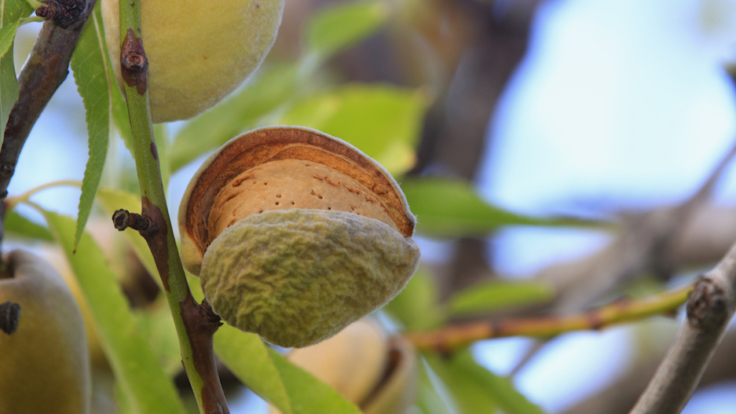India’s Tariffs Could Dent Gains From California’s Bumper Almond Crop
Celebrating Diwali in India with California almonds
Fall festivals and the wedding season are already ramping up in India. There’s Janmashtami which celebrates the birth of Lord Krishna, the festival for Lord Ganesha, the elephant-headed God of the Hindus, and Diwali, the famously elegant festival of lights, and many more throughout the various regions of India. Almonds are a popular gift for such occasions.
The timing is perfect for California’s almond growers. Across California’s lush green valleys, almonds are being harvested from orchards, loaded on trucks and delivered to mills where the essential nut will be separated from its shell and hull. Almond traders in India await the arrival of the best quality shipments for the festival season demand beginning early September.
Almonds have deep roots in India
Almonds in India date as far back as prehistoric times. Ancient Indian Sanskrit texts on Ayurveda, the Indian traditional medicine, detail the role of almonds and other nuts in providing health benefits. Almonds were exclusive and prestigious health supplements for the rich and royal during the Mughal rule from the 15th to the 19th century.
To this day, consuming raw almonds on a daily basis as a standalone morning chew, added to milk shakes, as oils or as a garnish to dishes, is widely prevalent in India and elsewhere on the sub-continent.
Indian consumers choose from types of almonds available in Indian street markets and grocery stores – Mamra, Gurbandi and California almonds. California almonds command a majority market share due to its wide availability and lower price. Sweeter in taste, California almonds are favored in Indian cooking and garnishing.
Tariffs could dampen California’s bumper crop
California produces 80 percent of the world’s almonds. Americans consume just over a third of California’s harvest. The remaining 67 percent is exported to other countries. California almond growers are on track for a bumper crop this year, producing a record 2.5 billion pounds of almonds, which would be a nine percent increase of over last year’s crop.
California growers have reason to worry about access to one of their biggest export markets. The Indian government increased tariffs on U.S. shelled almonds by 20 percent and non-shelled almonds by 17 percent in June. The move came days after the Trump administration announced plans to remove India from eligibility for key trade privileges under the U.S. Generalized System of Preference (GSP) program. India was the biggest beneficiary under the GSP program, exporting $5.6 billion worth of Indian products to the United States duty-free in 2017.
The latest tariff increase by India comes on top of an increase in customs duties last year and in addition to a 12 percent tax the Indian Ministry of Finance imposes on both domestic and imported almonds. The U.S. Department of Agriculture forecasts the increased cost will cause a five percent drop in U.S. almond exports to India, impacting the 6,800 almond growers in California, who are mostly small to medium-size, family-run enterprises.
According to a study by the Almond Board of California, the almond industry generates more than 100,000 jobs in California, mostly in the Central Valley. Almond growers in California contribute about $11 billion annually to the state’s economy.
“Tomorrow Begins Today”
India has become such an important market for California almond growers that the state almond board has an office in New Delhi with a $5.5 million annual budget.
In July of 2015, the Almond Board of California launched a successful marketing campaign in India, promoting the lesser-known nutrition benefits of almonds such as heart health, weight management and diabetes management.
The campaign, called “Tomorrow Begins Today,” reached 4.05 billion broadcast impressions and is credited with helping grow the snack category by 100 percent.
Tariffs are a tough nut to crack
In the face of new tariffs and competition from Vietnam, Hong Kong, Australia and Chile, California growers need to crack open new markets.
Unfortunately, the tariff wars are being fought in another of California’s important export markets – China. In 2018, China imposed a 50-percent retaliatory tariff on almond imports from the United States. U.S. exports declined by 33 percent from August 2018 to April 2019 compared with the same period of the prior year, according to Almond Board of California.
Higher tariffs could ultimately cost major U.S. fruit and nut industries over $2.6 billion per year in exports, according to a report by Daniel A. Sumner, an economist with the University of California Davis’ Department of Agricultural and Resource Economics. The economic blow could rise to as much as $3.3 billion because of lost market share overtaken by lower-priced alternatives from competing exporters.
Australia has taken advantage of their free trade agreement with China to expand exports. The free trade agreement between the two countries grants zero tariffs on almonds and other commodities starting January 1, 2019. Australian producers recorded a 20-fold increase in exports to China this year, according to the Australian Board of Almonds.
Nothing to celebrate
Retaliatory tariffs imposed by India will shortchange the gains hoped for by California almond growers who are expecting a bumper harvest this year, but who also face tariffs in another top export market: China.
Indian importers might look for other sources but no other global exporter can match the volume of production by California’s almond growers. As long as India’s appetite for sweet almonds continues to grow, Indian consumers will pay a higher price for U.S. almonds at their upcoming celebrations.
Pragya Bhatnagar is a Research Associate with the Hinrich Foundation where he focuses on International Trade Research. He is a Hinrich Foundation Global Trade Leader Scholar alumnus, earning his Master’s degree in International Journalism, specializing in Business and Financial Journalism, from Hong Kong Baptist University. He received his bachelor’s degree in Economics from Lucknow University, India.







